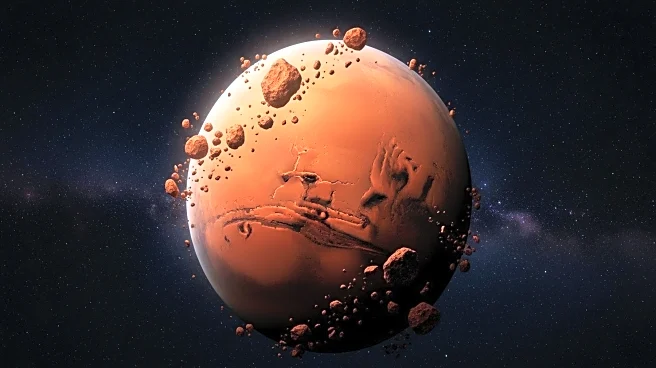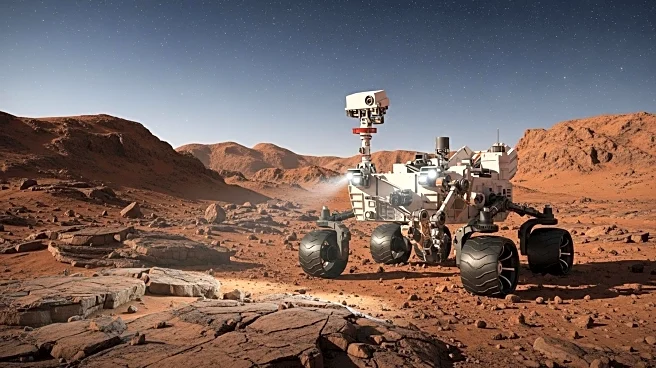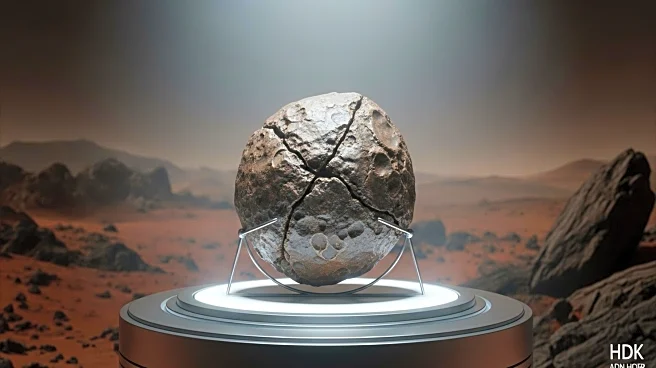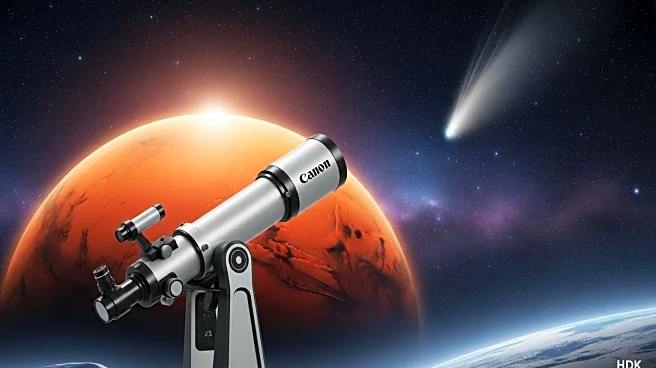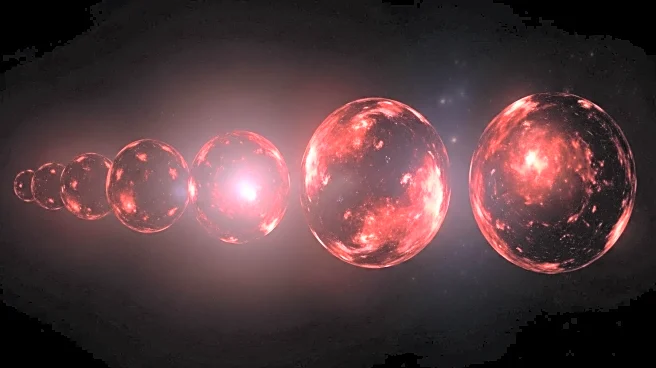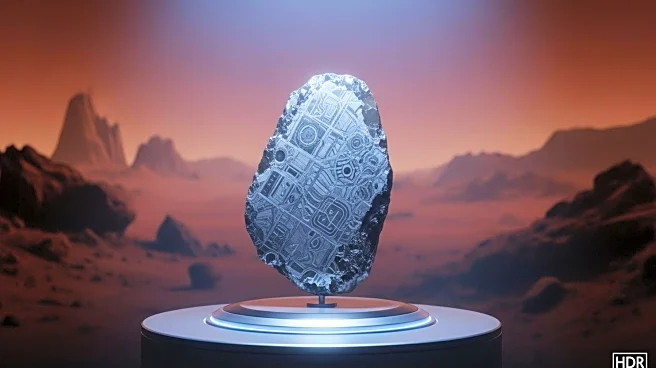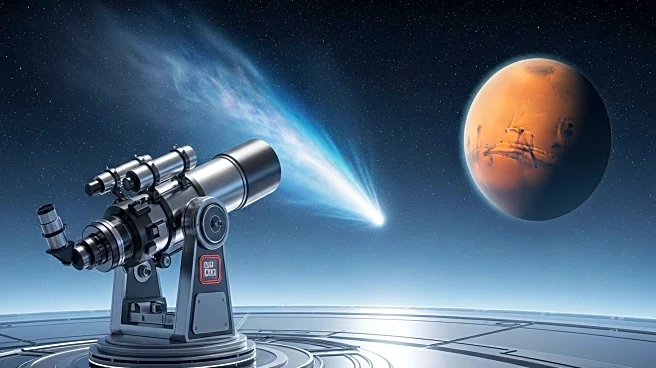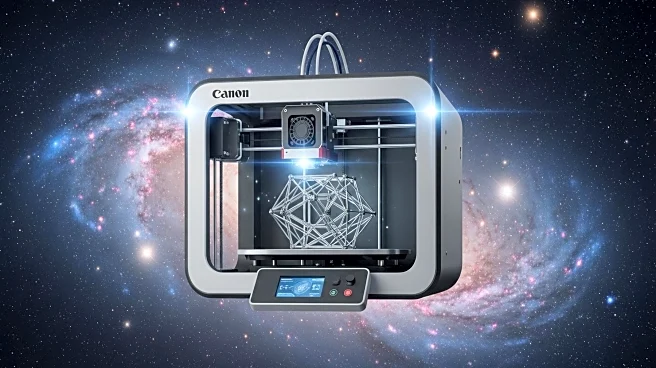What's Happening?
Recent research using data from NASA's InSight lander has revealed that Mars' interior contains large fragments of ancient cosmic debris. These chunks, formed during Mars' early days when it was bombarded by planet-size objects, are estimated to be up to 2.5 miles wide. The findings suggest that Mars' mantle is filled with compositionally distinct materials, resulting from colossal impacts that melted large parts of the planet into magma oceans. Unlike Earth, Mars has a static interior, preserving these ancient features as a planetary time capsule.
Why It's Important?
The discovery provides new insights into the formation and evolution of rocky planets, offering a glimpse into Mars' violent past. Understanding the composition and structure of Mars' interior can inform future exploration missions and enhance our knowledge of planetary geology. The findings also contribute to the broader understanding of how cosmic impacts shape planetary bodies, with implications for studying other celestial objects in the solar system.
What's Next?
Researchers will continue to analyze seismic data from Mars to refine their understanding of its interior structure. Future missions may focus on exploring these ancient features to uncover more details about Mars' geological history. The findings may also influence the design of upcoming Mars missions, as scientists seek to unravel the planet's mysteries and assess its potential for past or present life.
Beyond the Headlines
The research highlights the importance of seismic studies in planetary exploration, demonstrating how data from missions like InSight can reshape our understanding of celestial bodies. The findings may prompt discussions on the role of cosmic impacts in planetary formation and the preservation of ancient geological features.
